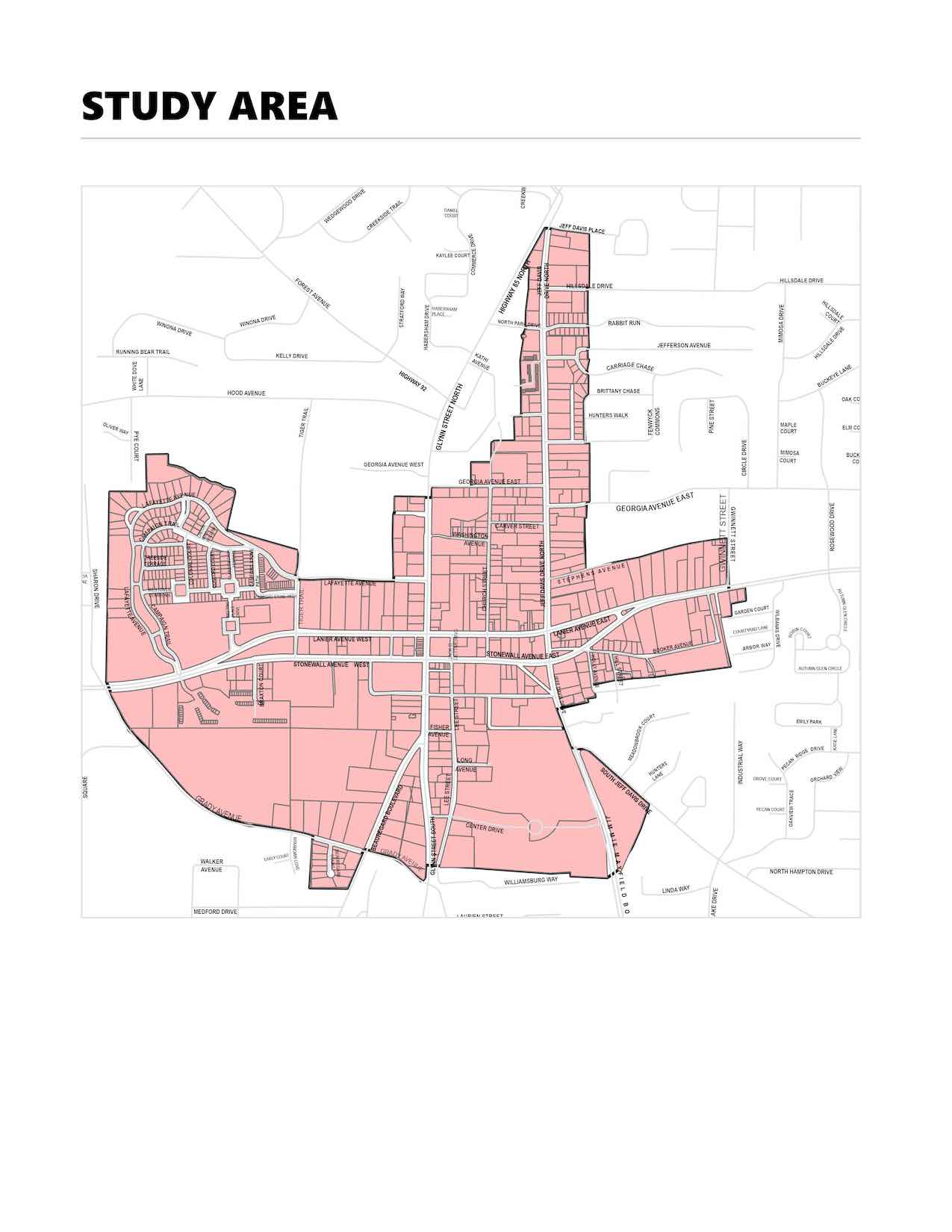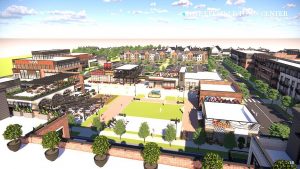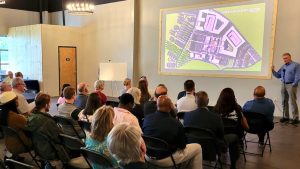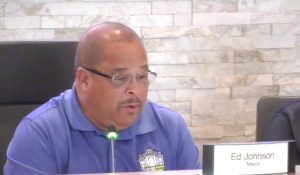Fayetteville is about to embark on a Livable Centers Initiative (LCI) study to consider future transportation and development in the center of the city.
The move by the City Council follows-up on the 2017 Comprehensive Plan, which had heavy citizen involvement that addressed transforming downtown and adjacent areas.
The LCI study area addresses the Main Street area (sometimes referred to as the historic district) and includes downtown, and areas to Lafayette Avenue to the west, Gwinnett Street to the east, Georgia Avenue and North Jeff Davis Drive to the north and Grady Avenue and just north of Williamsburg Way to the south.
The city was awarded the $100,000 LCI grant in May by the Atlanta Regional Commission (ARC), with the city contributing $20,000.
Of the nine proposals received through the Request for Proposal (RFP) process, the council on Nov. 5 approved Atlanta architects HKS to perform the LCI study.
Now that the consultant is approved, planning staff said the LCI study is expected to take several months.
Per the RFP, the goal of the LCI Program is to increase the use of alternatives to driving alone by developing transportation projects and other programs to improve accessibility, expand mixed-uses, utilize transit and support further development in the study area. Evaluation of the existing structure and development of likely scenarios should produce recommendations for future investment that support ARC’s Livable Centers Initiative Program.
According to the RFP document, “The implementation of the Fayetteville LCI Plan relies on a series of changes to the land use, zoning and development regulations governing the study area. One of the key tools necessary to make this vision a reality is the evaluation of the boundaries and design guidelines associated with the current main street district.
“With the intent of redefining the boundaries, establishing a regulatory plan and associated design guidelines for the new main street mixed-use district, including identifying character areas within the district. This should include addressing urban design standards like architectural details, building massing, landscaping, streetscaping, signage, utilities, public space and public amenities such as parks, plazas, community gardens and gateway markers along corridors.
“This project will occur in two phases. Phase one involves research, survey of existing conditions and public outreach events with stakeholders. Phase two involves creation of the design guidelines document, plus creation and/or modification to the existing main street overlay districts codes. In all cases, final documents will be presented to and reviewed by the Planning and Zoning Commission and approved by the City Council.
Phase 1 will consist of two tasks. Task 1 will involve a review of the project goals and objectives and confirm the project schedule. City staff and the consultant will review the complied list of previous plans and policies, including current design guidelines and zoning code provisions.
Task 2 will have the consultant team and staff will host a community meeting with key stakeholders to introduce all team members and begin an exchange of ideas about the future of the study area (Main Street). The consultant team and staff will review relevant background information, which will include previous and on-going plans and studies, planned infrastructure improvements, relevant regulatory documents, and existing conditions documentation of land use, physical design characteristics, transportation systems, environmental features, parks and open space systems, city needs, and historic resources. This review will be supplemented by on site observations and additional mapping and diagrams of key ideas. This report will be used to guide the work undertaken during the community charrette. The analysis will be further informed through community participation during the planning process.
Among the more recent reports relevant to the study area are:
• 2016 Market Study (Downtown Fayetteville Residential and Commercial Mixed-Use Market Analysis)
• 2016 Conceptual Downtown Master Plan
• 2017 Comprehensive Plan
• 2019 Path Master Plan 12
• 2019 Fayette County Transportation Plan and Master Path Plan
• 2019 Downtown Traffic Engineering Report
• 2020 Concept Site Plan for 195 Stonewall Ave West
Phase 2 will be centered around the community meeting and/or charrettes held on-site in or near the study area to review community goals and objectives, provided necessary updates, establish the new Guiding Principles for the study area and recommendation for the Design Guidelines and new development codes. The consultant team and staff will lead a series of public meetings to engage the community. The charrette or community design meeting will facilitate multiple feedback loops and allow the team to create and define major elements of the vision on-site in a collaborative environment with key stakeholders and the community.
Phase 2 will include four Tasks:
Task 1: Public Workshops and/or design charrette — The consultant will propose a process to engage the community regarding specific elements of the draft codes, gather additional ideas and goals, and formulate implementation strategies. The process should include at least two workshops or partial planning charrettes. The intent of the workshops or charrettes will be to ensure that the consultant is sufficiently familiar with the community vision to guide the creation of the design guidelines and new code. While the primary end result will be new land development regulations, the public process should include discussions of character areas, architectural design standards, alternatives for street design, street connectivity, and planning strategies that create vital and livable neighborhood corridors and commercial nodes.
Task 2: Develop the new Main Street Design Guidelines and Development Codes — This task includes developing design guideline for the Main Street District to serve as a companion to the new proposed zoning regulations; designing parameters for the code; and provide for the integration of zoning regulations into the city’s existing zoning and land development regulations.
Task 3: Refining the Code — This task will have the consultant submit a preliminary draft of the code for internal review and comment; present the first public draft of the code for comment by stakeholders and neighborhood residents; conduct at least one public hearing/work session presentation before the City Council and Planning and Zoning Commission; and be responsible for up to two rounds of revisions if needed.
Task 4: Prepare Deliverables — A final report and district design guidelines will be prepared to compile the results of the overall work effort, including the study process, relevant findings and a copy of the Design Guidelines and zoning code options including 3-dimensional illustrations that is in a format that can be adopted by the City of Fayetteville into the development regulations.
The LCI program was created to allocate federal transportation dollars for planning in local communities. Once the plans have been created, local governments can apply for federal funding to assist in bringing their plans into reality. Recipients were selected by ARC along with a diverse committee of partner organizations and planning professionals from around the region, ARC said.













Leave a Comment
You must be logged in to post a comment.